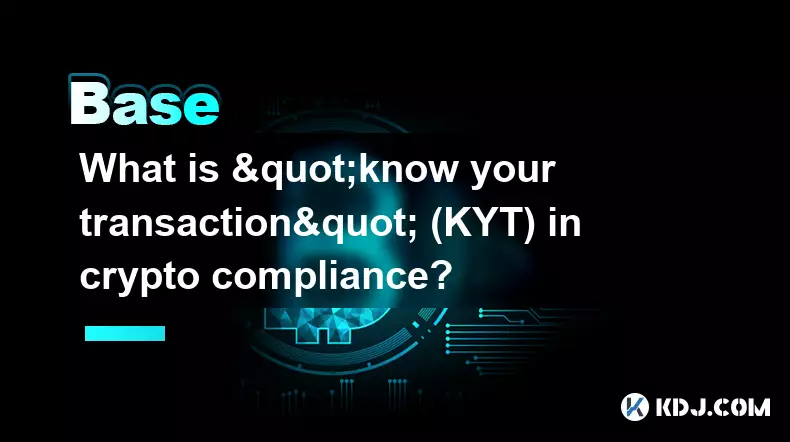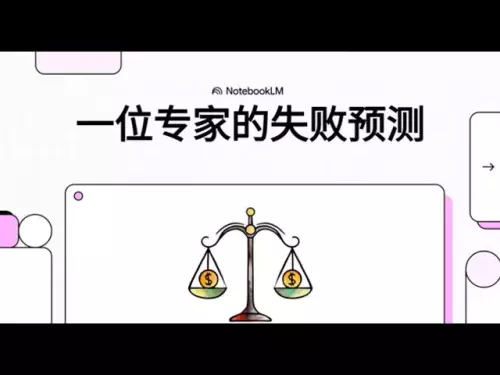-
 Bitcoin
Bitcoin $111300
2.83% -
 Ethereum
Ethereum $4312
0.80% -
 XRP
XRP $2.840
3.80% -
 Tether USDt
Tether USDt $1.000
0.01% -
 BNB
BNB $852.2
1.05% -
 Solana
Solana $207.2
5.45% -
 USDC
USDC $0.9999
0.01% -
 Dogecoin
Dogecoin $0.2137
2.90% -
 TRON
TRON $0.3381
0.76% -
 Cardano
Cardano $0.8287
4.64% -
 Chainlink
Chainlink $23.38
4.85% -
 Hyperliquid
Hyperliquid $44.51
3.21% -
 Ethena USDe
Ethena USDe $1.001
0.02% -
 Sui
Sui $3.301
4.84% -
 Bitcoin Cash
Bitcoin Cash $582.3
7.81% -
 Stellar
Stellar $0.3645
4.03% -
 Avalanche
Avalanche $24.19
4.82% -
 Hedera
Hedera $0.2186
2.63% -
 UNUS SED LEO
UNUS SED LEO $9.530
-0.59% -
 Cronos
Cronos $0.2562
-2.68% -
 Litecoin
Litecoin $111.6
3.52% -
 Toncoin
Toncoin $3.177
2.36% -
 Shiba Inu
Shiba Inu $0.00001244
4.41% -
 Polkadot
Polkadot $3.793
3.80% -
 Uniswap
Uniswap $9.538
3.58% -
 Bitget Token
Bitget Token $5.114
10.33% -
 World Liberty Financial
World Liberty Financial $0.2350
4.64% -
 Dai
Dai $0.9999
0.00% -
 Monero
Monero $265.9
2.65% -
 Aave
Aave $315.7
4.43%
What is a crypto "blue chip"?
A crypto "blue chip" like Bitcoin or Ethereum is seen as a stable, high-cap digital asset with strong adoption, resilience, and influence across the market.
Sep 02, 2025 at 02:19 pm

Understanding the Concept of a Crypto 'Blue Chip'
1. A crypto 'blue chip' refers to a digital asset that is widely recognized for its stability, strong market presence, and long-term reliability within the cryptocurrency ecosystem. These assets are typically associated with mature blockchain projects that have demonstrated consistent performance over time.
2. Unlike speculative or emerging tokens, blue chip cryptocurrencies usually possess large market capitalizations, significant trading volumes, and broad adoption across exchanges, wallets, and decentralized applications.
3. The term 'blue chip' originates from traditional finance, where it describes well-established, financially sound companies like Apple or Johnson & Johnson. In the crypto space, the label is informally applied to cryptocurrencies that exhibit similar traits of resilience and trust.
4. Investors often view blue chip cryptos as safer holdings during periods of market volatility. While no digital asset is immune to price swings, these tokens tend to recover more quickly from downturns due to strong community support and underlying fundamentals.
5. Examples of widely accepted blue chip cryptocurrencies include Bitcoin (BTC), Ethereum (ETH), and occasionally Binance Coin (BNB) and Solana (SOL), depending on market conditions and investor sentiment.
Characteristics That Define a Crypto Blue Chip
1. A dominant market capitalization places the asset among the top tiers of all cryptocurrencies. This reflects not only investor confidence but also the scale of its network and usage.
2. Active development and continuous upgrades are critical markers. Blue chip projects maintain transparent roadmaps, regular code updates, and active GitHub repositories, ensuring the technology evolves to meet user demands.
3. High liquidity across major exchanges allows for large trades with minimal slippage. This accessibility makes the asset attractive to institutional investors and retail traders alike.
4. Strong community engagement and developer participation contribute to long-term sustainability. Open forums, governance participation, and third-party integrations signal a healthy ecosystem.
5. Real-world utility and adoption in decentralized finance (DeFi), non-fungible tokens (NFTs), or enterprise solutions reinforce the asset’s value proposition beyond mere speculation.
How Blue Chip Cryptos Influence Market Trends
1. Price movements of blue chip cryptos often set the tone for the broader market. When Bitcoin or Ethereum experience significant rallies or corrections, smaller altcoins frequently follow in tandem.
2. Institutional investment flows are heavily concentrated in blue chip assets. Companies like MicroStrategy and Tesla allocating capital to Bitcoin underscore its perceived reliability as a store of value.
3. Stablecoins and yield-bearing protocols in DeFi commonly use blue chip cryptos as collateral, reinforcing their role as foundational assets in the digital economy.
4. Regulatory scrutiny tends to focus on these major assets first, shaping compliance frameworks that eventually extend to smaller projects.
5. Media coverage and public perception are disproportionately influenced by the performance of blue chip tokens, affecting sentiment across the entire crypto landscape.
Risks and Misconceptions Surrounding Crypto Blue Chips
1. Despite their reputation, blue chip cryptos are not risk-free. Regulatory actions, technological failures, or macroeconomic shifts can trigger sharp declines.
2. Market dominance does not guarantee future performance. Past success does not insulate any asset from disruption by newer, more efficient blockchains or shifts in user behavior.
3. Some investors mistakenly treat blue chip cryptos as static holdings, neglecting the need for ongoing evaluation of project health, competition, and ecosystem dynamics.
4. Centralization concerns exist, particularly around mining concentration in Bitcoin or validator control in proof-of-stake networks like Ethereum.
5. Overreliance on a few blue chip assets can lead to portfolio concentration, reducing diversification benefits and increasing exposure to systemic shocks.
Frequently Asked Questions
What makes Bitcoin the most recognized crypto blue chip?Bitcoin is considered the original cryptocurrency, with the longest track record, highest market cap, and broadest global recognition. Its fixed supply and decentralized nature contribute to its status as digital gold.
Can a new cryptocurrency become a blue chip?Yes, though it takes time. A new project must demonstrate sustained technological innovation, widespread adoption, and resilience through market cycles before being regarded as a blue chip.
Is Ethereum still considered a blue chip despite competition?Ethereum remains a core blue chip due to its leading role in smart contracts, DeFi, and NFTs. Ongoing upgrades like the transition to proof-of-stake strengthen its position despite emerging rivals.
Do blue chip cryptos pay dividends like traditional stocks?They do not offer dividends in the conventional sense. However, some provide staking rewards or governance rights, allowing holders to earn yields or influence protocol decisions.
Disclaimer:info@kdj.com
The information provided is not trading advice. kdj.com does not assume any responsibility for any investments made based on the information provided in this article. Cryptocurrencies are highly volatile and it is highly recommended that you invest with caution after thorough research!
If you believe that the content used on this website infringes your copyright, please contact us immediately (info@kdj.com) and we will delete it promptly.
- Stablecoin Showdown: South Korea's Institutional Crypto Race
- 2025-09-03 02:45:12
- Bitcoin Price Prediction, Pepeto Buy: Navigating the Crypto Hype
- 2025-09-03 02:45:12
- PTB Tokenomics: Redefining DeFi Adoption and Value Capture
- 2025-09-03 03:05:12
- AI, XRP, and Predictions: Decoding the Crypto Crystal Ball
- 2025-09-03 03:05:12
- Stablecoins, Yield-Generating, and Reflect: A New Era of DeFi?
- 2025-09-03 03:45:16
- BNB, Cardano, and MAGACOIN FINANCE: What's Hot in Q4 2025?
- 2025-09-03 04:05:16
Related knowledge

What is a "crypto trading bot" and do they work?
Sep 02,2025 at 04:19pm
Understanding Crypto Trading Bots1. A crypto trading bot is a software application designed to automate the process of buying and selling cryptocurren...

What is a "copy trading" platform?
Sep 02,2025 at 07:00pm
Understanding Copy Trading in the Cryptocurrency Space1. A copy trading platform allows users to automatically replicate the trades of experienced inv...

What is "structured products" in DeFi?
Sep 02,2025 at 11:01pm
Understanding Structured Products in DeFi1. In decentralized finance (DeFi), structured products refer to customized financial instruments that combin...

What is "formal verification" for smart contracts?
Sep 03,2025 at 03:00am
Bitcoin's Role in Decentralized Finance1. Bitcoin remains the cornerstone of decentralized finance, providing a trustless and immutable ledger for pee...

What is "know your transaction" (KYT) in crypto compliance?
Sep 02,2025 at 11:36pm
Decentralized Finance and Its Role in the Crypto Ecosystem1. Decentralized finance, commonly known as DeFi, has restructured how financial services op...

What is the Financial Action Task Force (FATF) "travel rule" for crypto?
Sep 02,2025 at 11:54pm
Understanding the FATF Travel Rule in the Cryptocurrency Sector1. The Financial Action Task Force (FATF) introduced the 'Travel Rule' as part of its u...

What is a "crypto trading bot" and do they work?
Sep 02,2025 at 04:19pm
Understanding Crypto Trading Bots1. A crypto trading bot is a software application designed to automate the process of buying and selling cryptocurren...

What is a "copy trading" platform?
Sep 02,2025 at 07:00pm
Understanding Copy Trading in the Cryptocurrency Space1. A copy trading platform allows users to automatically replicate the trades of experienced inv...

What is "structured products" in DeFi?
Sep 02,2025 at 11:01pm
Understanding Structured Products in DeFi1. In decentralized finance (DeFi), structured products refer to customized financial instruments that combin...

What is "formal verification" for smart contracts?
Sep 03,2025 at 03:00am
Bitcoin's Role in Decentralized Finance1. Bitcoin remains the cornerstone of decentralized finance, providing a trustless and immutable ledger for pee...

What is "know your transaction" (KYT) in crypto compliance?
Sep 02,2025 at 11:36pm
Decentralized Finance and Its Role in the Crypto Ecosystem1. Decentralized finance, commonly known as DeFi, has restructured how financial services op...

What is the Financial Action Task Force (FATF) "travel rule" for crypto?
Sep 02,2025 at 11:54pm
Understanding the FATF Travel Rule in the Cryptocurrency Sector1. The Financial Action Task Force (FATF) introduced the 'Travel Rule' as part of its u...
See all articles





















![[Pycoin] PI Coin -Start introduction of practical use (emergency)?! Now .. 'Here' first you can use it first / How to accelerate mining #paikoin [Pycoin] PI Coin -Start introduction of practical use (emergency)?! Now .. 'Here' first you can use it first / How to accelerate mining #paikoin](/uploads/2025/09/02/cryptocurrencies-news/videos/pycoin-pi-coin-start-introduction-practical-emergency-accelerate-mining-paikoin/68b6ea848f2d1_image_500_375.webp)



































































